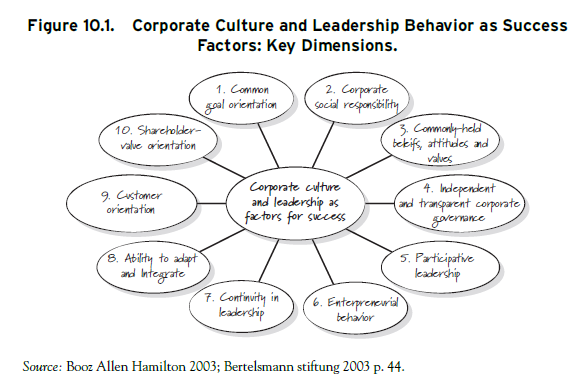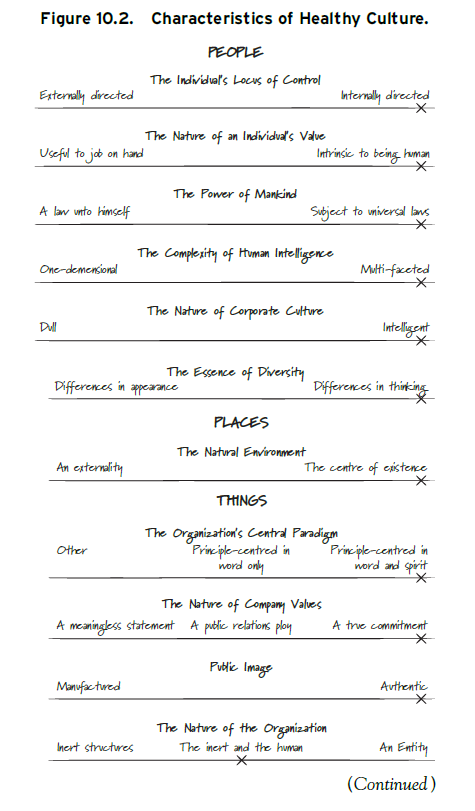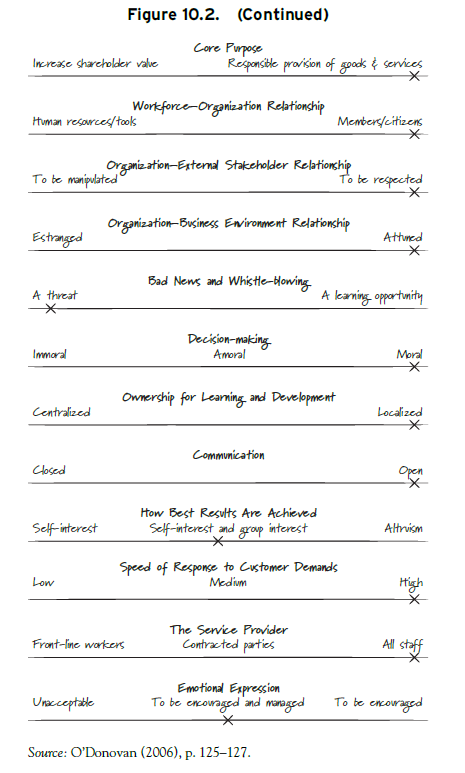A different kind of approach is illustrated in a German publishing company offering a prize in 2003 to six companies selected from a nominated pool of sixty-three for the following:
individual models of excellence in developing and living a corporate culture . . . An international working commission composed of experts from academia and the business world developed ten critical dimensions of corporate culture in intense discussion . . . Then a team of researchers from Bertelsman Stiftung and the consulting firm of Booz Allen Hamilton evaluated these companies against the ten dimensions and their related criteria. (Sackman, Bertelsman Stiftung, 2006, p. 43)
The dimensions are shown in Figure 10.1

The research team then examined economic performance for the past ten years and publicly available information about the companies to winnow the list down to ten finalists who were then evaluated against the ten criteria. The evaluations were done through company visits and interviews of all levels from board chairs to members of the works council. For each of the ten factors, detailed checklists were developed to enable the evaluation teams to score each company relatively objectively. The detailed findings were then reviewed with the original commission leading to the selection of six companies as outstanding examples of the evolution and use of corporate culture in achieving their excellent performance: The BMW Group, Deutsche Lufthansa, Grundfos, Henkel, Hilti, and Novo Nordisk. Sackman concludes, “the corporate culture that distinguished each of them today [in 2006] has, on the one hand, contributed to their success and, on the other hand, placed them in a strong position as they face challenges to come” (p. 45). What makes this research valuable is the detailed description of the six companies so that the reader can get past the abstractions that the ten dimensions represent and see how things actually worked in each company. Note that the ten criteria involve both issues of survival in the external environment and issues of internal integration.
A second example is the detailed analysis of a corporate culture change program conducted in HSBC in Hong Kong (O’Donovan, 2006). I will give some of the change process details in Chapter Seventeen , but for purposes of this chapter, it is relevant to examine what dimensions of culture were used in this change program. O ’ Donovan started with Schein’s hypothesized set of dimensions of what an innovative culture would look like and added several dimensions of her own to create the twenty-three dimensions shown in Figure 10.2 (Schein, 1990). It is important to note that the Xs on each dimension show the optimum position on that dimension for innovation and learning, which means that on some dimensions, a middle position is more desirable than an extreme position.
There have been many other change programs involving culture dimensions, but these recent ones are notable for the degree of detail they have provided on how culture was conceptualized and assessed.


Source: Schein Edgar H. (2010), Organizational Culture and Leadership, Jossey-Bass; 4th edition.

15 May 2021
17 May 2021
15 May 2021
15 May 2021
15 May 2021
15 May 2021